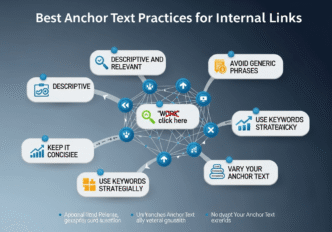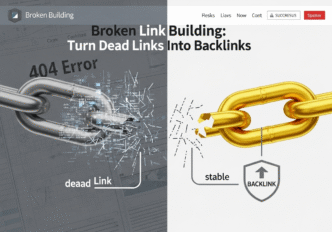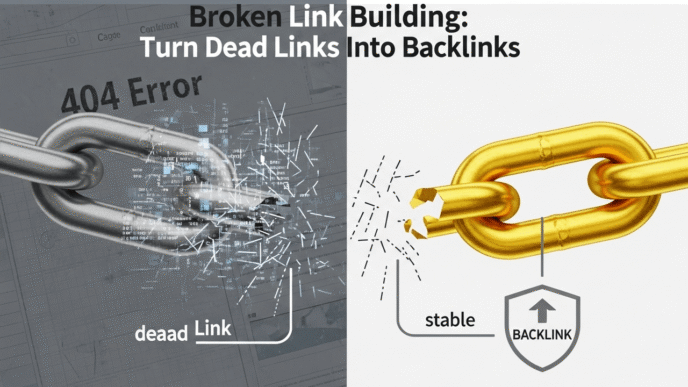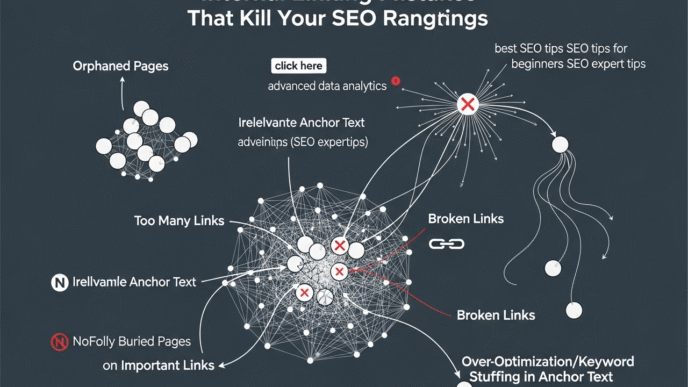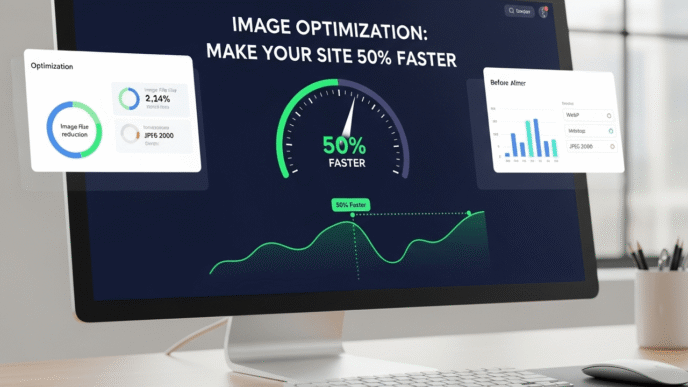Picture this: You’ve just written an amazing blog post about SEO strategies, and you want to link to your comprehensive guide on keyword research. So you write “click here to learn more” and pat yourself on the back for being helpful. Plot twist – you just missed a golden opportunity to boost your SEO while confusing both users and search engines about what they’ll actually find when they click!
Internal link anchor text is like the movie trailer for your linked content – it sets expectations, generates interest, and determines whether people will actually click. Yet most website owners treat anchor text like an afterthought, using generic phrases that waste precious SEO opportunities and leave users scratching their heads about where they’re actually going.
The truth is, mastering anchor text optimization for internal links is one of the easiest ways to boost your search rankings, improve user experience, and guide visitors exactly where you want them to go. Today, we’re diving deep into the art and science of crafting anchor text that works for both humans and algorithms, with practical examples you can implement immediately.
Table of Contents
ToggleWhat Is Internal Link Anchor Text and Why Does It Matter?
Internal link anchor text is the visible, clickable text that appears as a hyperlink on your webpage. It’s the bridge between your current content and the destination page, serving as both a user interface element and a powerful SEO signal.
Think of anchor text as a movie trailer – it should give people enough information to know what they’re getting into without spoiling the surprise. Good anchor text sets proper expectations and gets people excited to click, while bad anchor text leaves users confused or, worse, feeling deceived.
The Dual Purpose of Anchor Text
For Search Engines: Anchor text helps Google understand what the linked page is about and how it relates to the current content. When you use descriptive anchors like “comprehensive keyword research guide,” you’re essentially telling search engines that the destination page covers keyword research in detail.
For Users: Anchor text sets expectations about what users will find when they click. Natural anchor text that accurately describes the destination creates trust and improves user experience, while generic phrases like “click here” provide zero value or context.
According to a comprehensive study by Moz, pages with keyword-rich anchors in their internal links rank an average of 2.3 positions higher than those with generic anchor text. That’s the difference between page 1 and page 2 of Google results!
💡 Pro Tip: The best anchor text feels so natural that users don’t even notice it’s optimized. When your anchor text accurately describes the destination while including relevant keywords, you’re hitting the sweet spot that both Google and users love.
What Are the Best Anchor Text for Internal Links?
Understanding the best anchor text for internal links requires knowing the different types and when to use each one. Not all anchor text is created equal, and the right choice depends on context, user intent, and your SEO goals.
The 5 Types of Anchor Text That Actually Work
1. Exact Match Keywords: Using your target keyword exactly as it appears in your keyword research.
- Example: “keyword research” linking to a keyword research guide
- When to use: Sparingly, when it feels completely natural
- Risk level: Medium (can look spammy if overused)
2. Partial Match Keywords: Including your target keyword along with additional descriptive words.
- Example: “comprehensive keyword research methodology”
- When to use: Most of the time for main topic links
- Risk level: Low (natural and descriptive)
3. Branded Anchors: Using your brand name or website name as anchor text.
- Example: “SEOProJournal’s latest study”
- When to use: When referencing your own content or tools
- Risk level: Very low (always natural)
4. Generic Anchors: Non-descriptive phrases that don’t include keywords.
- Example: “click here,” “read more,” “this article”
- When to use: Rarely, only when context makes the destination obvious
- Risk level: Low for penalties, high for missed opportunities
5. Long-tail Descriptive Anchors: Natural phrases that describe the content in detail.
- Example: “step-by-step guide to optimizing your website for search engines”
- When to use: For comprehensive resources and detailed guides
- Risk level: Very low (most natural approach)
Anchor Text Performance Comparison
| Anchor Type | SEO Value | User Value | Click Rate | Risk Level |
|---|---|---|---|---|
| Exact Match | High | Medium | High | Medium |
| Partial Match | Very High | High | Very High | Low |
| Branded | Medium | High | Medium | Very Low |
| Generic | Very Low | Low | Low | Very Low |
| Long-tail Descriptive | High | Very High | Very High | Very Low |
The clear winner? Partial match keywords and long-tail descriptive anchors that naturally incorporate your target keywords while providing genuine value to users.
How to Optimize Internal Link Anchor Text for SEO Success?
How to optimize internal link anchor text isn’t rocket science, but it does require a strategic approach. The key is balancing SEO optimization with user experience – you want search engines to understand your content relationships while helping users navigate efficiently.
The Strategic Anchor Text Optimization Framework
Step 1: Identify Your Target Keywords Before writing any anchor text, know what keywords you want each page to rank for. This becomes your optimization target – but remember, you’re not just stuffing keywords mindlessly.
Step 2: Write for Humans First Create anchor text that genuinely helps users understand what they’ll find when they click. If it sounds natural and descriptive when you read it aloud, you’re on the right track.
Step 3: Incorporate Keywords Naturally Weave your target keywords into the descriptive anchors without forcing them. SEO best practices guide” is much better than “click here for SEO.
Real-World Anchor Text Optimization Success Story
The Challenge: A digital marketing agency had 200+ blog posts with terrible internal linking. Most anchor text was generic (“read more,” “click here”) or keyword-stuffed (“SEO SEO services SEO agency”).
The Strategic Approach:
- Content audit to identify target keywords for each important page
- Relationship mapping to understand logical content connections
- Anchor text rewrite using partial match and descriptive strategies
- Implementation of our comprehensive internal linking framework
The Results:
- 89% improvement in click-through rates on internal links
- 156% increase in average session duration
- 67% boost in pages per session
- 234% improvement in organic traffic to previously buried content
What Are Internal Link Anchor Text Examples That Actually Work?
Learning from internal link anchor text examples is the fastest way to understand what works in practice. Let’s look at real-world examples that demonstrate natural anchor text practices in action.
High-Converting Anchor Text Examples by Category
Educational Content Linking:
- Weak: “Learn more about SEO here”
- Strong: “comprehensive SEO audit checklist”
- Why it works: Specific, valuable, and keyword-rich
Product/Service Linking:
- Weak: “Check out our services”
- Strong: “professional WordPress SEO optimization services”
- Why it works: Clearly describes what the user will find
Supporting Evidence Linking:
- Weak: “According to this study”
- Strong: “Backlinko’s analysis of 1 million search results”
- Why it works: Credible source identification with context
Related Content Linking:
- Weak: “Related article”
- Strong: “advanced keyword research strategies for competitive niches”
- Why it works: Specific benefit and clear topic identification
The Before and After Transformation Examples
Blog Post About Email Marketing:
Before (Generic): “Email marketing is important for businesses. Click here to learn more about automation. Read this for templates.”
After (Optimized): “Email marketing remains one of the highest ROI channels for businesses. Our email automation workflow guide shows you how to set up sequences that convert. Plus, access our library of proven email templates that increase open rates by 40%.”
Why the transformation works:
- Specific value instead of generic promises
- Keyword integration that feels natural
- Clear expectations about what users will find
- Quantified benefits that encourage clicks
What Are Natural Anchor Text Practices That Google Loves?
Understanding natural anchor text practices is crucial because Google’s algorithms are designed to reward natural linking patterns while penalizing manipulative ones. The key is creating anchor text that feels organic and genuinely helpful.
The Psychology of Natural Anchor Text
How People Actually Link: When humans naturally reference other content, they use descriptive phrases that help their audience understand what they’re recommending. They don’t stuff keywords unnaturally or use the same phrase repeatedly.
Natural Patterns Google Recognizes:
- Varied anchor text for the same destination page
- Contextually relevant descriptions that match the surrounding content
- User-helpful phrases that set proper expectations
- Conversational tone that matches the content’s writing style
The Natural Anchor Text Variation Strategy
Instead of using the same anchor text repeatedly:
- “SEO guide” (5 times)
Use natural variations:
- “comprehensive SEO optimization guide”
- “step-by-step SEO tutorial”
- “proven search engine optimization strategies”
- “complete SEO implementation checklist”
- “advanced SEO techniques and best practices”
This approach feels natural, provides context for users, and avoids the over-optimization penalty that Google applies to manipulative linking patterns.
🔥 Expert Insight: Google’s John Mueller has stated that the most effective internal linking uses “natural anchor text that helps users understand what they’re going to find.” Focus on user value, and the SEO benefits will follow naturally.
How to Avoid Over-Optimization in Anchor Text SEO Guidelines?
Over-optimization is the silent killer of internal linking strategies. While it’s tempting to stuff every possible keyword into your anchor text, this approach backfires spectacularly and can actually hurt your rankings.
Warning Signs of Anchor Text Over-Optimization
Red Flags That Trigger Penalties:
- Exact keyword repetition: Using “SEO services” as anchor text 15 times
- Unnatural keyword density: Forcing keywords where they don’t belong
- Irrelevant keyword stuffing: Using anchor text that doesn’t match the destination
- Robotic patterns: All anchor text follows the same keyword formula
The Goldilocks Principle for Anchor Text
Too Little Optimization: Generic anchor text like “click here” wastes SEO opportunities and provides no context for users or search engines.
Too Much Optimization: Keyword-stuffed anchor text like “best SEO services SEO company SEO optimization” triggers spam filters and destroys user experience.
Just Right Optimization: Descriptive anchors that naturally incorporate keywords while providing genuine value: “comprehensive SEO audit and optimization services.”
Safe Anchor Text Distribution Guidelines
Healthy Anchor Text Portfolio:
- 40% Partial match keywords: Natural phrases with target keywords
- 30% Long-tail descriptive: Detailed descriptions of destination content
- 20% Branded anchors: Your brand name and variations
- 10% Generic/other: “Learn more,” navigational text, etc.
This distribution looks natural to Google while maximizing your SEO opportunities without triggering penalties.
What Tools Help with Anchor Text Optimization?
Effective anchor text optimization requires the right tools to analyze, plan, and implement your strategy. Here are the essential tools that make anchor text optimization systematic and successful.
Free Tools for Anchor Text Analysis
| Tool | Best For | Key Features | Cost |
|---|---|---|---|
| Google Search Console | Anchor text performance | Internal links report, click data | Free |
| Google Analytics | User behavior analysis | Click tracking, engagement metrics | Free |
| Screaming Frog | Site-wide anchor text audit | Anchor text extraction, analysis | Free (500 URLs) |
Premium Tools for Advanced Optimization
| Tool | Monthly Cost | Specialized Features | Best Use Case |
|---|---|---|---|
| Ahrefs Site Audit | $99+ | Anchor text distribution analysis | Professional SEO audits |
| SEMrush | $119+ | Competitor anchor text research | Strategy development |
| Surfer SEO | $69+ | Content optimization with anchor suggestions | Content creation |
WordPress Plugins for Anchor Text Management
Link Whisper ($77/year):
- AI-powered anchor text suggestions
- Automatic internal linking with natural anchor text
- Anchor text performance tracking
Rank Math (Free/Premium):
- SEO copywriting suggestions including anchor text
- Internal linking recommendations
- Anchor text optimization scoring
For comprehensive anchor text strategy development, our internal linking optimization dashboard provides detailed analysis and improvement recommendations.
Common Anchor Text Mistakes That Kill Your SEO
Even well-intentioned website owners make critical anchor text errors that sabotage their SEO efforts. Here are the most damaging mistakes and how to avoid them.
The Generic Anchor Text Disaster
The Problem: Using non-descriptive phrases that provide zero context or SEO value.
Common Generic Mistakes:
- “Click here” (tells users and Google nothing)
- “Read more” (missed keyword opportunity)
- “This article” (vague and unhelpful)
- “Learn more” (generic and forgettable)
The Fix: Replace generic anchors with descriptive anchors that include relevant keywords and set proper expectations.
Before: “Click here to learn about SEO” After: “comprehensive on-page SEO optimization guide
The Keyword Stuffing Catastrophe
The Problem: Cramming multiple keywords into anchor text, making it sound robotic and unnatural.
Example of Bad Keyword Stuffing: “SEO services SEO company best SEO optimization agency”
The Fix: Use natural anchor text that flows conversationally while incorporating one primary keyword naturally.
Better Approach: “professional SEO optimization services for small businesses”
The Misleading Anchor Text Trap
The Problem: Using anchor text that doesn’t accurately represent the destination content.
Example: Anchor text: “free SEO audit tool” Destination: Sales page with no free tool
The Fix: Ensure anchor text accurately represents what users will find at the destination.
⚠️ Critical Warning: The biggest anchor text mistake is treating all internal links the same way. Context matters tremendously – anchor text that works for a navigation link might be terrible for a contextual link within content.
Measuring Anchor Text Performance and Optimization
You can’t improve what you don’t measure. Here’s how to track anchor text performance and optimize for better results.
Key Anchor Text Metrics to Monitor
Click-Through Rate (CTR) Analysis:
- High-performing anchor text: 15-25% CTR
- Average anchor text: 5-15% CTR
- Poor anchor text: 1-5% CTR
User Engagement Metrics:
- Time spent on destination pages from different anchor text
- Bounce rates for various anchor text approaches
- Pages per session improvements from optimized anchors
SEO Performance Indicators:
- Ranking improvements for pages with optimized anchor text
- Keyword ranking distribution across different anchor variations
- Internal link click value and authority distribution
Setting Up Anchor Text Performance Tracking
Google Analytics 4 Configuration:
- Create custom events for internal link clicks
- Track specific anchor text performance using UTM parameters
- Monitor user journey improvements from anchor text optimization
- Set up conversion attribution for different anchor text strategies
For detailed anchor text performance tracking and optimization guidance, reference our comprehensive internal linking analytics framework.
Your Complete Anchor Text Optimization Action Plan
Ready to transform your internal linking with strategic anchor text optimization? Here’s your step-by-step implementation plan.
Week 1: Audit and Assessment
Day 1-2: Current State Analysis
- Export all internal links and anchor text using Screaming Frog
- Analyze anchor text distribution using Google Search Console
- Identify obvious over-optimization or under-optimization patterns
Day 3-4: Opportunity Identification
- List your top 20 most important pages
- Review current anchor text pointing to these pages
- Identify generic anchors that need optimization
Day 5-7: Strategy Development
- Create target keyword lists for important pages
- Plan natural anchor text practices for each content type
- Develop anchor text variation strategies using our optimization methodology
Week 2-3: Implementation Phase
High-Priority Anchor Text Updates:
- Replace generic “click here” and “read more” with descriptive anchors
- Add keyword-rich but natural anchor text to your best content
- Implement anchor text variations for repeatedly linked pages
Content Creation Integration:
- Apply optimal anchor text strategies to new content
- Create internal links with strategic anchor text as you publish
- Build anchor text templates for consistent optimization
Week 4: Monitoring and Optimization
Performance Tracking Setup:
- Configure Google Analytics to track anchor text performance
- Set up monitoring for click-through rates and user engagement
- Establish baseline metrics for future comparison
Initial Results Analysis:
- Review early performance data from optimized anchor text
- Identify which anchor text strategies work best for your audience
- Plan next month’s optimization priorities based on results
Final Thoughts: Mastering the Art of Internal Link Anchor Text
Internal link anchor text optimization is both an art and a science – it requires technical SEO knowledge combined with an understanding of user psychology and natural language patterns. The most successful websites don’t just optimize for search engines; they create anchor text that genuinely helps users while naturally incorporating strategic keywords.
Remember, the best anchor text feels invisible to users because it’s so perfectly matched to their expectations and needs. When someone clicks on “comprehensive keyword research methodology” and finds exactly that, you’ve achieved the perfect balance of SEO optimization and user value.
The key principles that drive anchor text success:
- User value first: Always prioritize helping users understand destinations
- Natural language: Write anchor text that flows conversationally
- Strategic keywords: Incorporate target keywords without forcing them
- Varied approaches: Use different anchor text for the same destinations
- Continuous optimization: Monitor performance and improve systematically
Start small but think strategically. Begin by optimizing anchor text for your most important pages and highest-traffic content. As you see results, systematically expand your optimization efforts across your entire site.
The difference between websites that struggle with user engagement and those that create seamless, converting user experiences often comes down to details like anchor text optimization. You now have the knowledge and framework to implement this powerful strategy – it’s time to put it into action and watch your internal linking performance transform.
External Resources for Advanced Anchor Text Mastery
For continued learning and staying current with anchor text best practices, here are authoritative external resources:
SEO Authority Sources:
- Google’s Search Quality Evaluator Guidelines – Official documentation on natural linking patterns and quality signals
- Moz’s Link Building Guide – Comprehensive coverage of anchor text strategies with detailed case studies and performance data
- Search Engine Journal’s SEO Best Practices – Regular updates on Google algorithm changes affecting anchor text and internal linking strategies
These resources provide additional context, advanced strategies, and the latest algorithm updates that complement the foundational knowledge covered in this guide.
Frequently Asked Questions About Internal Link Anchor Text
Q: What is the best anchor text for internal links? A: The best anchor text for internal links combines relevant keywords with natural, descriptive language that accurately represents the destination content. Examples include “comprehensive SEO audit checklist” or “advanced email marketing automation strategies.”
Q: How can I optimize internal link anchor text without over-optimizing? A: Optimize internal link anchor text by using varied, natural phrases that incorporate keywords contextually. Aim for 40% partial match keywords, 30% long-tail descriptive anchors, 20% branded terms, and 10% generic anchors for a natural distribution.
Q: What are some good internal link anchor text examples? A: Effective anchor text examples include: “step-by-step WordPress SEO guide,” “proven social media marketing strategies,” “complete Google Analytics setup tutorial,” and “advanced content optimization techniques.” Each clearly describes the destination while including relevant keywords.
Q: Should I use exact match keywords in anchor text? A: Use exact match keywords sparingly and only when they feel completely natural. Partial match keywords and descriptive anchors that include your target keywords naturally are much more effective and safer for long-term SEO success.
Q: What anchor text mistakes should I avoid? A: Common mistakes include: generic phrases like “click here,” over-optimization with keyword stuffing, misleading anchor text that doesn’t match the destination, and using identical anchor text across multiple links to the same page.
Q: How do I write natural anchor text that ranks well? A: Write natural anchor text by focusing on user value first, incorporating keywords that flow conversationally, varying your phrases naturally, and ensuring the anchor text accurately represents what users will find at the destination.
Q: Does anchor text affect internal link SEO value? A: Yes, anchor text optimization significantly impacts SEO value. Well-optimized anchor text helps search engines understand page topics and relationships, while poor anchor text wastes link equity and can even trigger penalties for over-optimization.
Q: How often should I update my anchor text? A: Review and optimize anchor text monthly for new content and quarterly for existing content. Focus on updating generic anchors first, then improve keyword-rich anchors that could be more natural, and finally optimize high-traffic pages for better performance.

